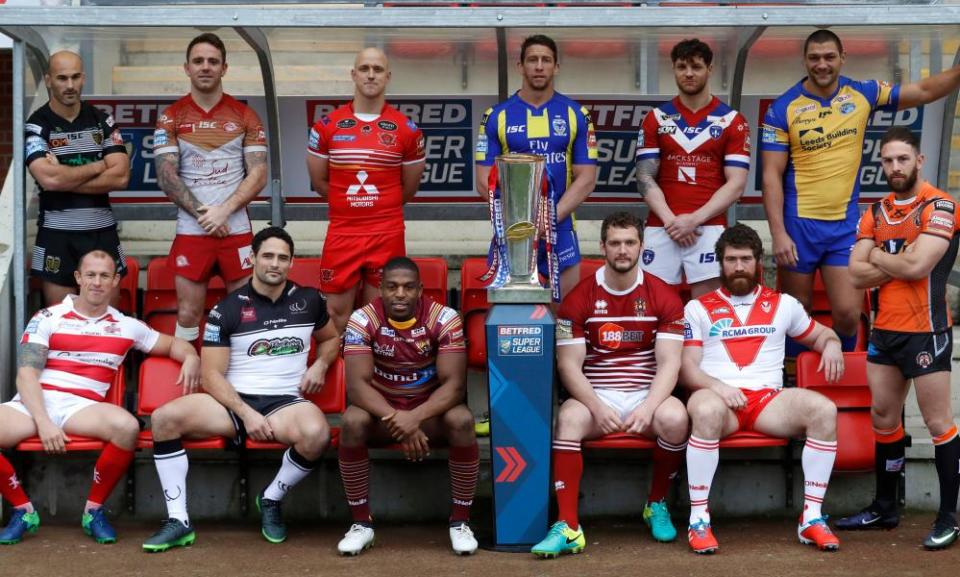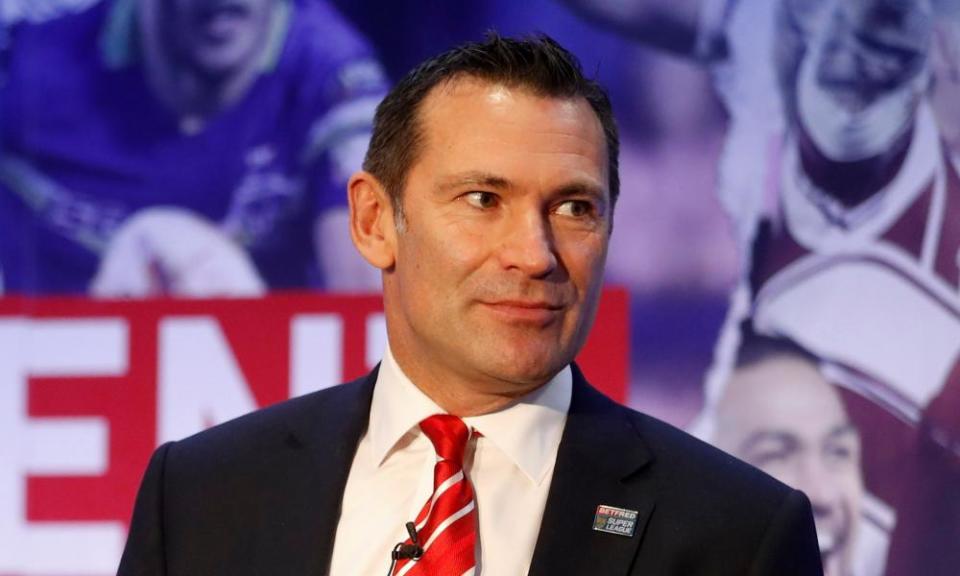Super League’s Roger Draper admits salary cap must rise to stop player drain

Roger Draper has dropped the strongest hint yet that the Super League structure could continue beyond this season, while also admitting those at the top “have to do something” about the salary cap.
The often-criticised Super 8s is in the final season of its initial three-year cycle and the Super League executive director told the Guardian proposals about potential changes for 2018 will be put to clubs by June at the latest.
Wholesale changes are more likely to be implemented in 2019. “We’d like to get something finalised on the structure sooner rather than later,” Draper said. “If we’re going to make any changes then the aim is to get the proposals to the clubs for June.
“I think there will be some slight changes but if we’re going to make bigger changes – if we do at all – they will be for 2019. One of the challenges is that we know attendances are down in the Super 8s and it’s how you make it competitive and relevant – but we’ll see. It could be 2018 but it’ll more likely be 2019.”
Super League’s £1.825m salary cap has risen slightly since its introduction in 1999, while the NRL and rugby union continue to increase their incremental spends. The NRL’s salary cap is around £4m this season.
Draper said that is a concern and changes could be forthcoming as part of further proposals to be put to Super League clubs next month. “Yes, it could involve a change to the salary cap,” he said. “When you look at the comparison chart, we’ve stayed flat and the NRL have shot off [the graph].

“It is a worry but the boom and bust days are gone. Clubs are in a good place and the league is competitive but we do have to do something about the salary cap. It’s not going to be huge increases but we have to put at least a three-year plan in place to make sure we’ve got the wriggle room to keep the best players.”
Draper is hopeful any changes to the cap will give clubs the best chance of retaining their top talent. Proposals concerning central contracts and alterations to the cap are a response to demands from Super League sides to get the problem sorted out as quickly as possible.
“All the Super League clubs’ chief executives met last week and we were going to put the central contract proposals through in June but because of transfer deadlines clubs have requested we accelerate it so we’ll be putting it to them in April,” he said.
“There’s a number of things in there; marquee players, a proper salary cap plan and some tweaks to some of the rules we’ve got at the moment which involve targeting rugby union players to come into rugby league.”
The Guardian revealed last week that cities such as Newcastle and Bristol have expressed interest in inheriting an existing Super League franchise. Draper admitted he is excited by the amount of external interest in the competition.
“You’ve got be cautious and have an element of sticking to our strengths, and our strengths are the heartlands,” he said. “But ventures like Toronto are creating a lot of noise and interest, and there are other franchises that would be interested in becoming part of Super League, which is a real positive. I think it’s great other areas are expressing interest – it’s great for the sport and it excites me.”

 Yahoo Sport
Yahoo Sport 





































